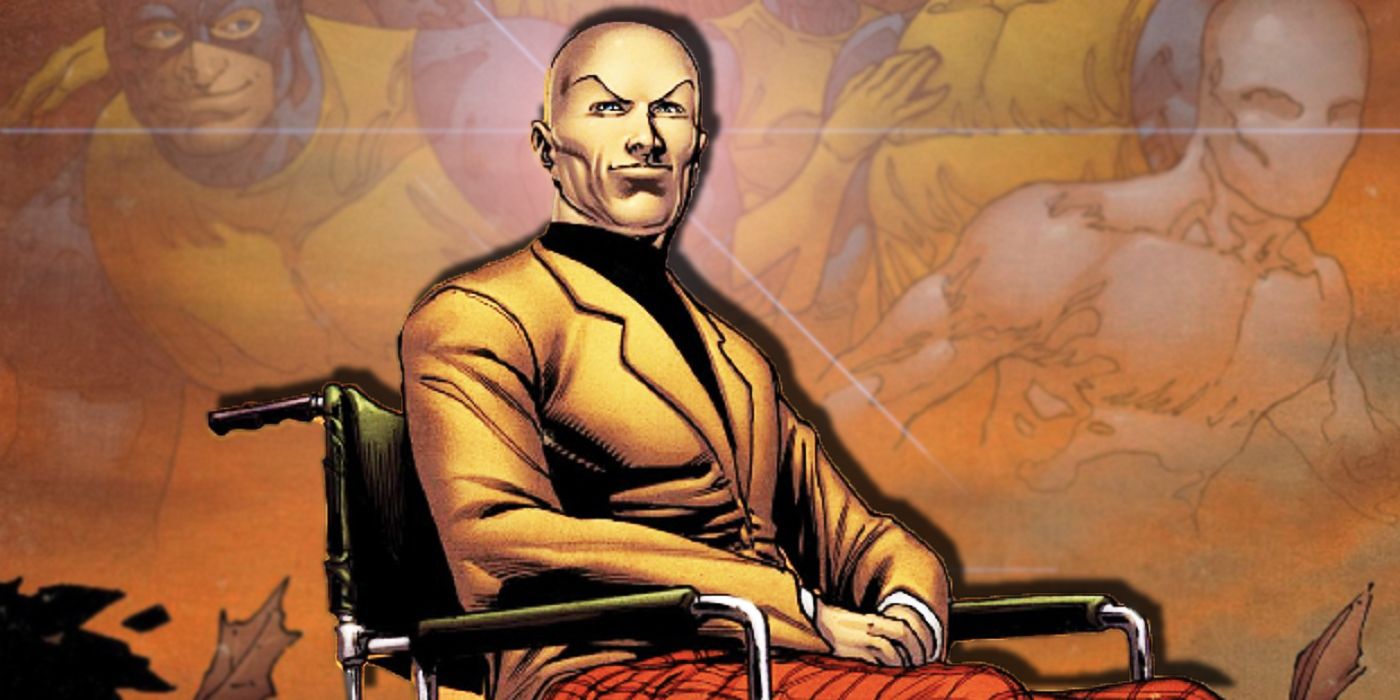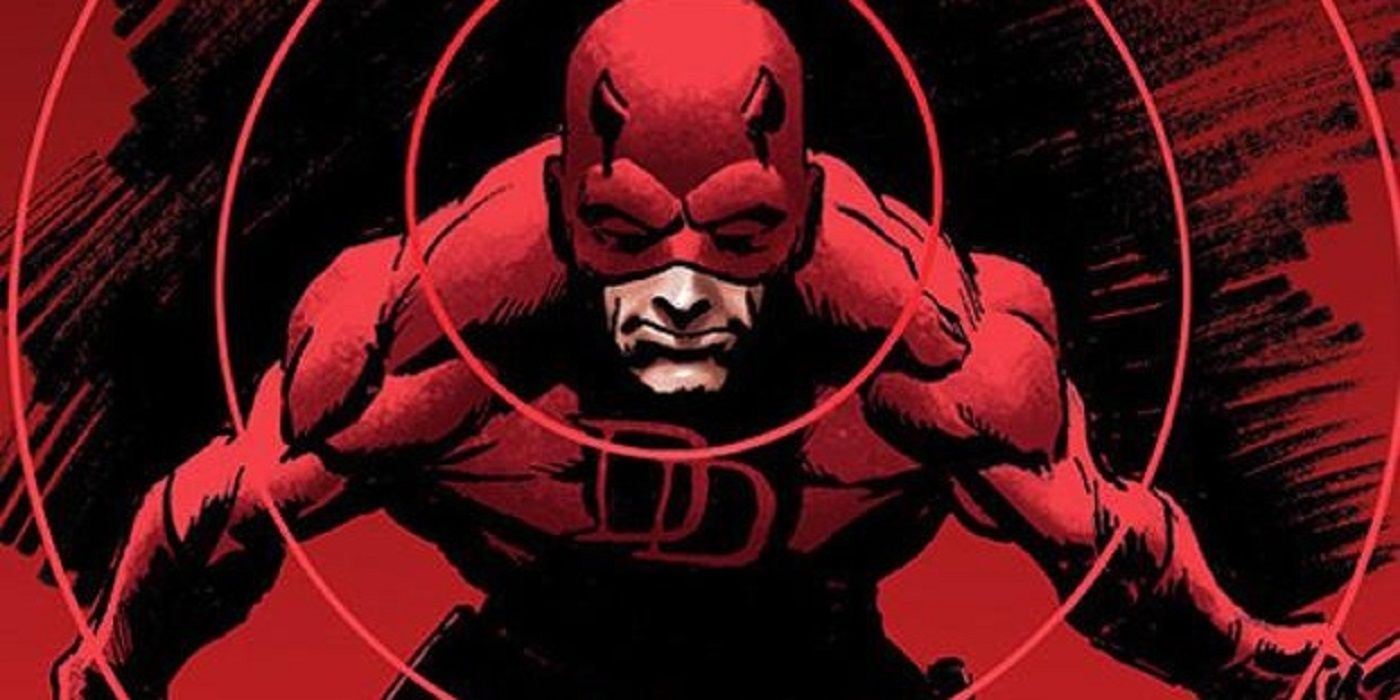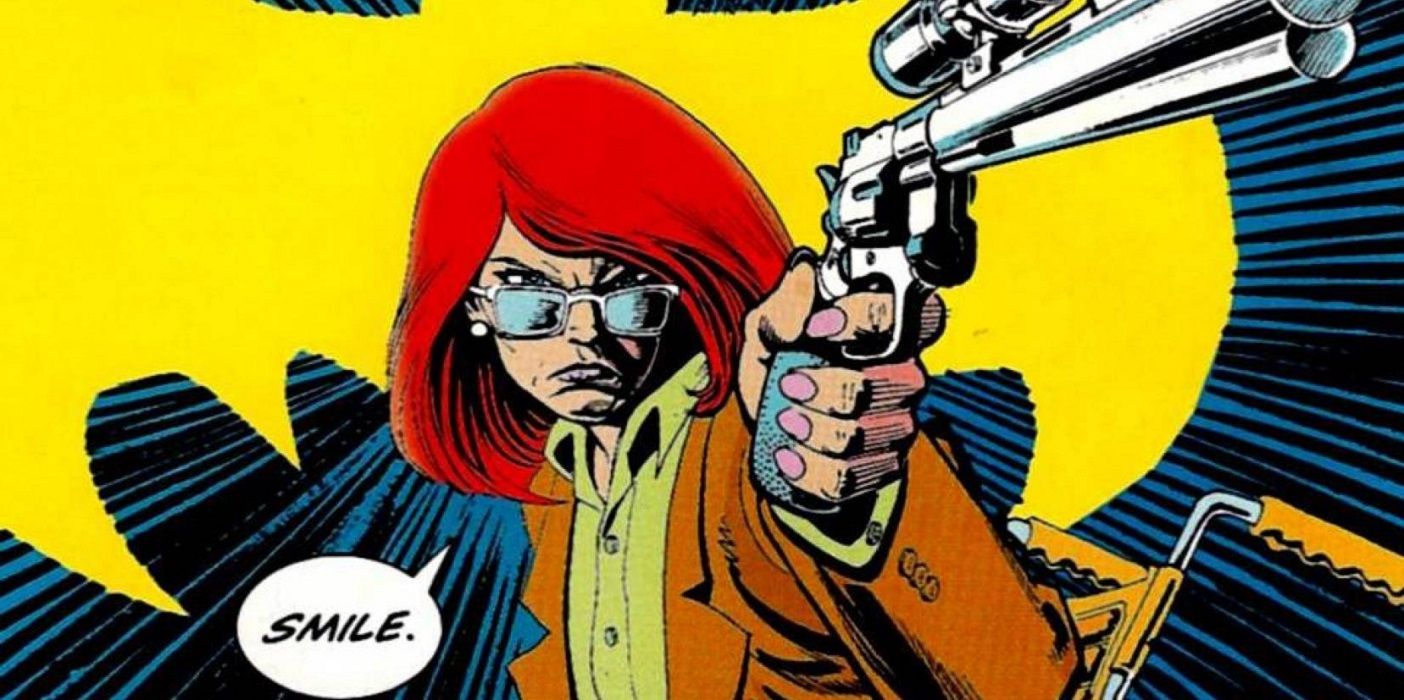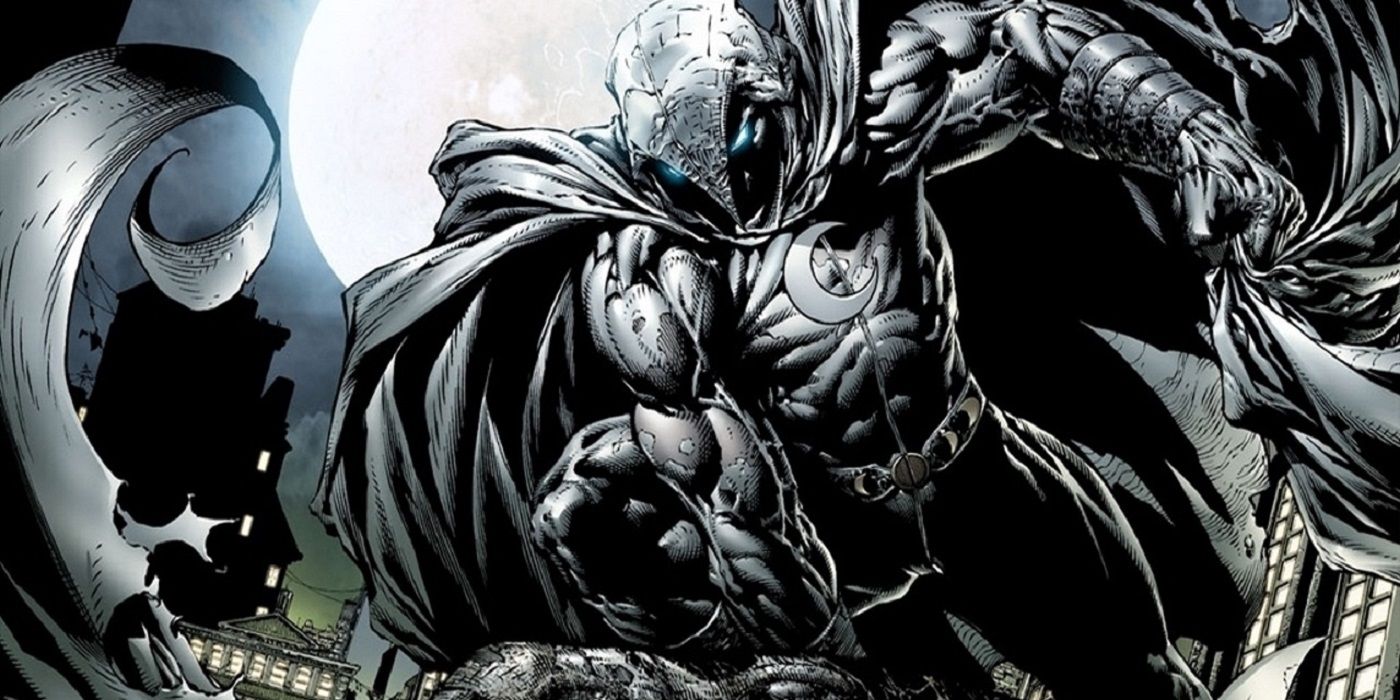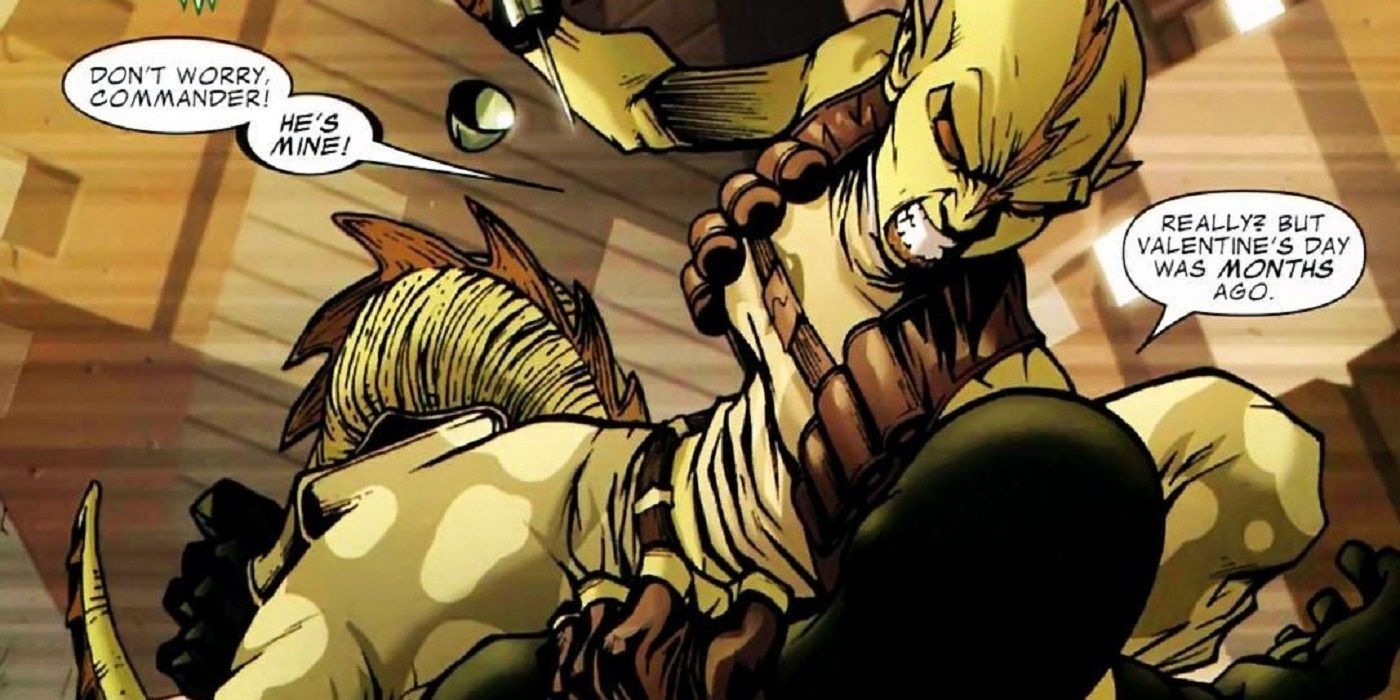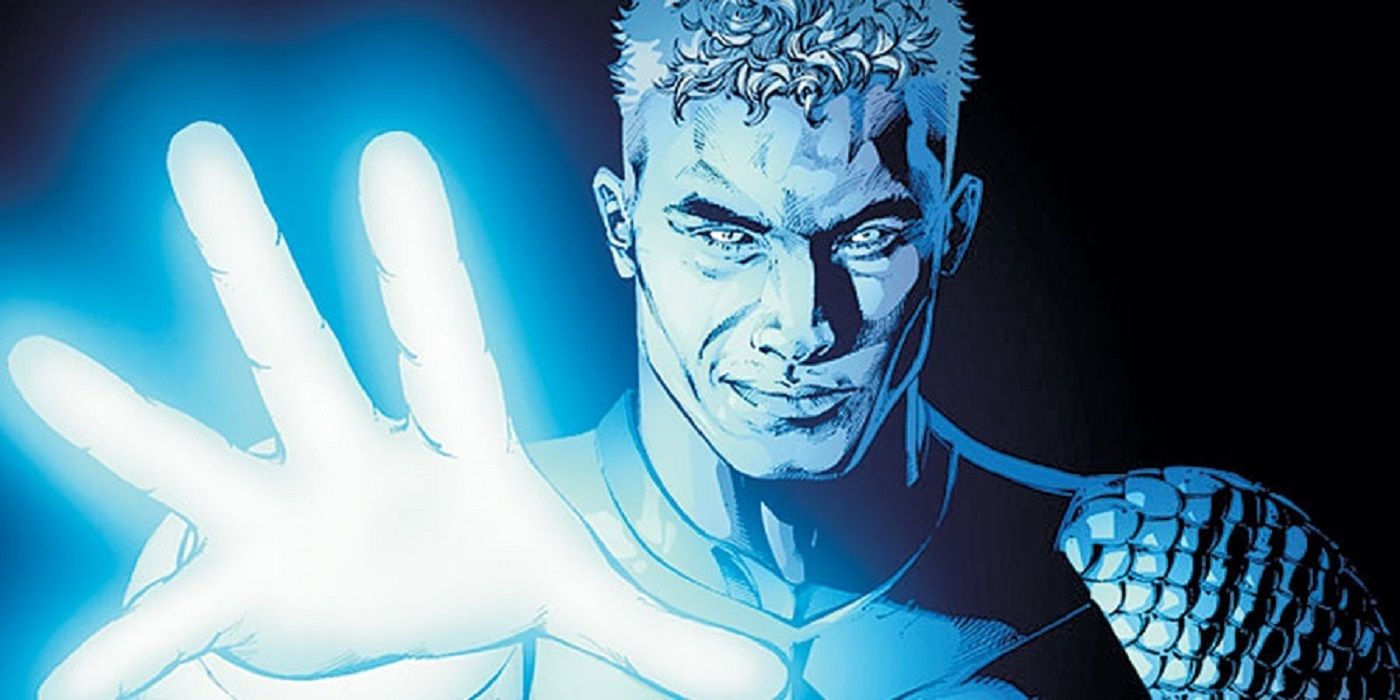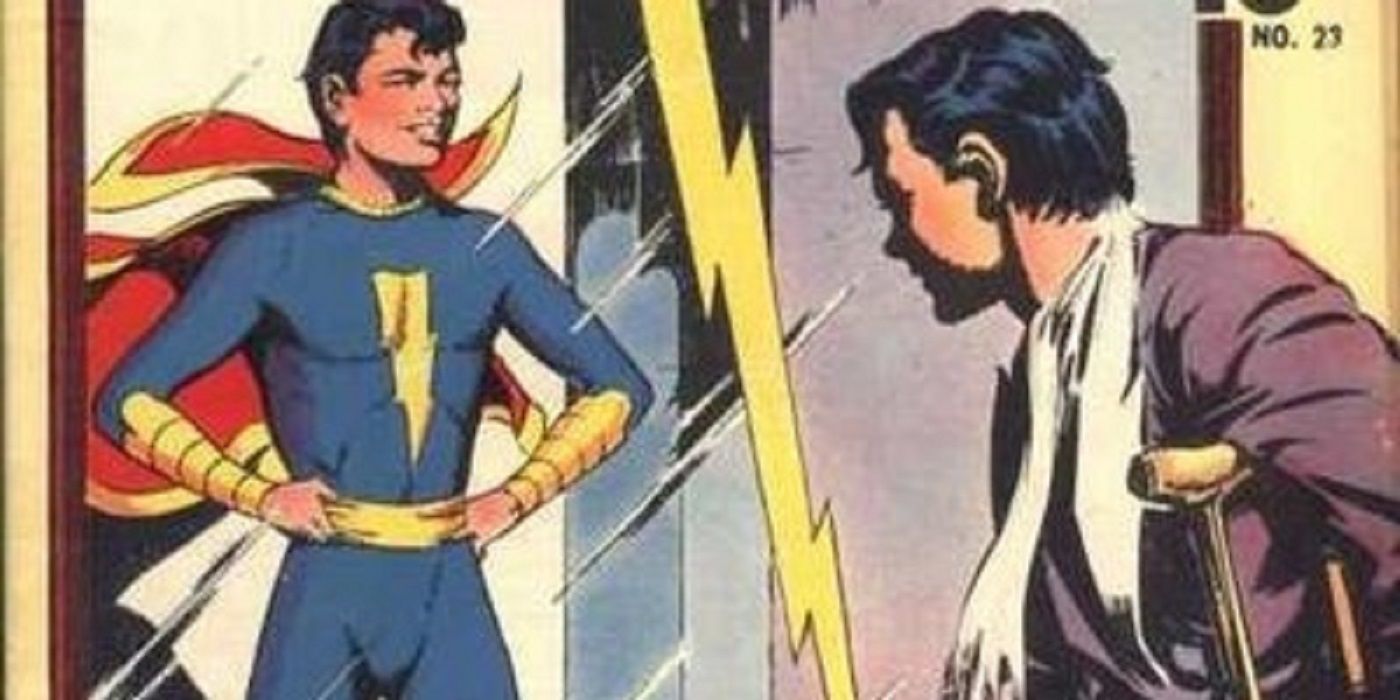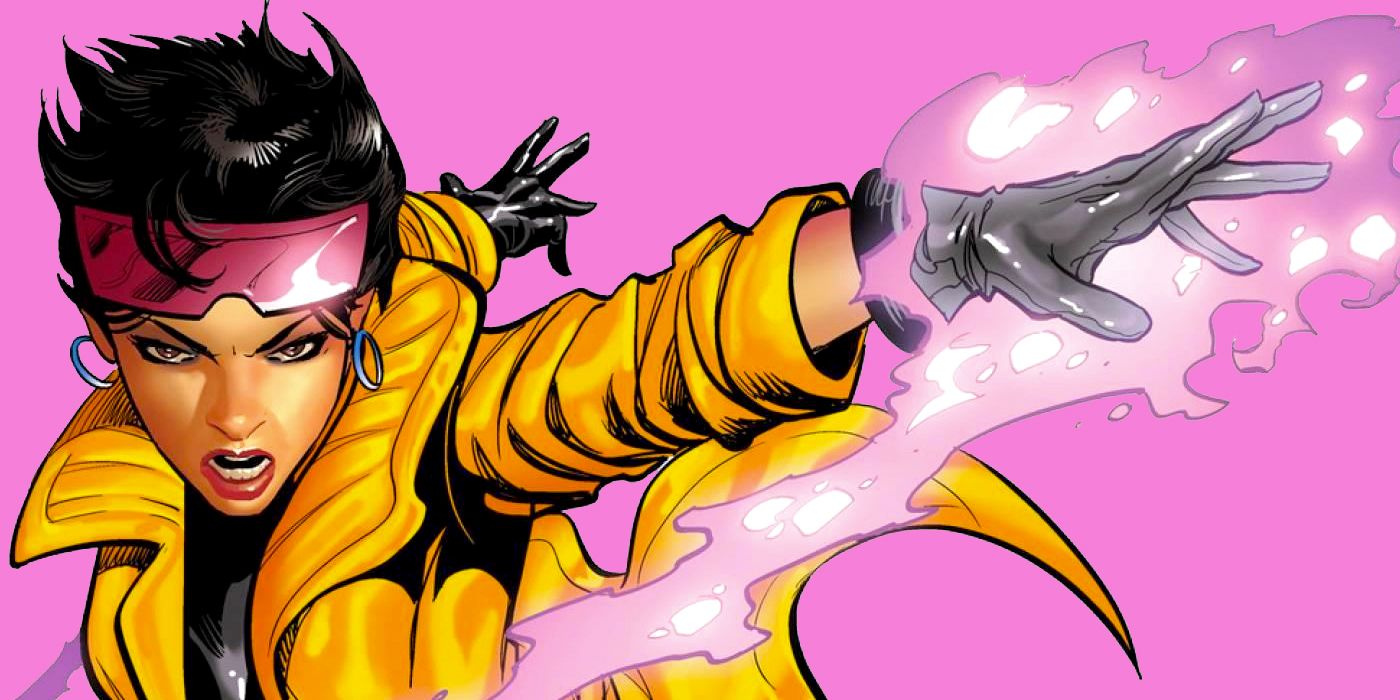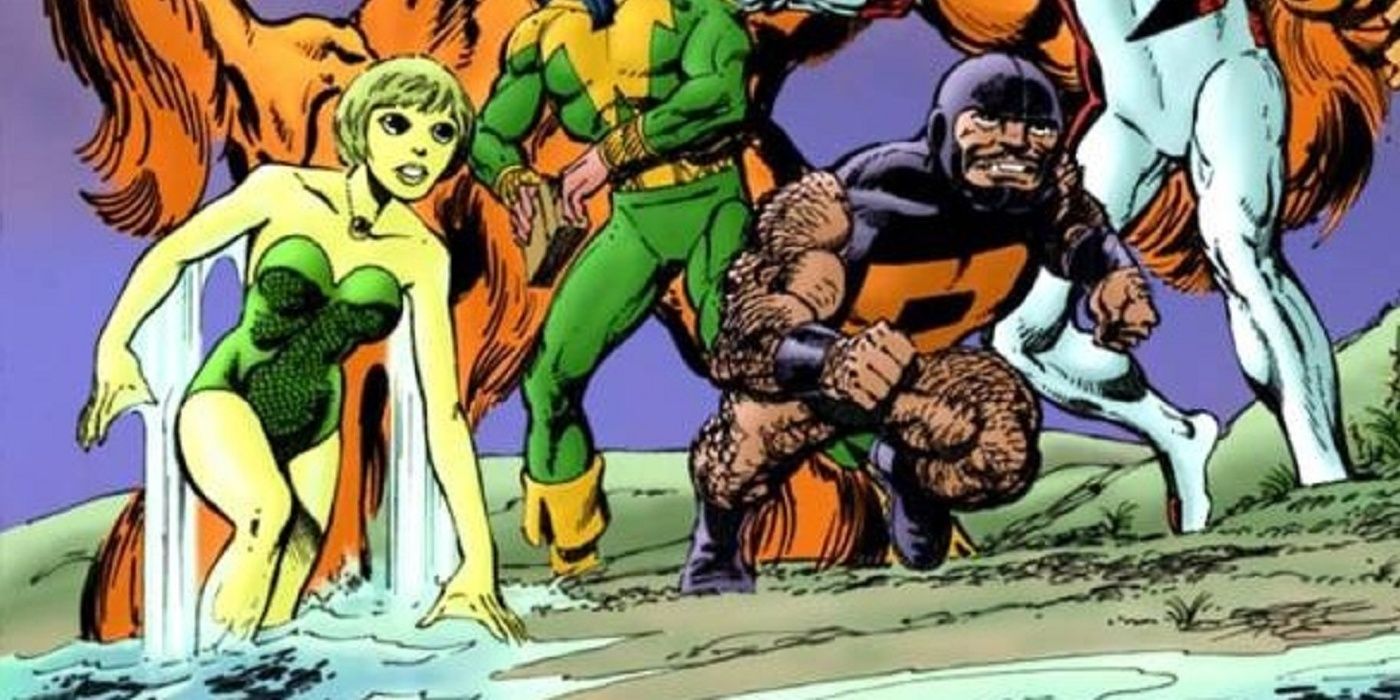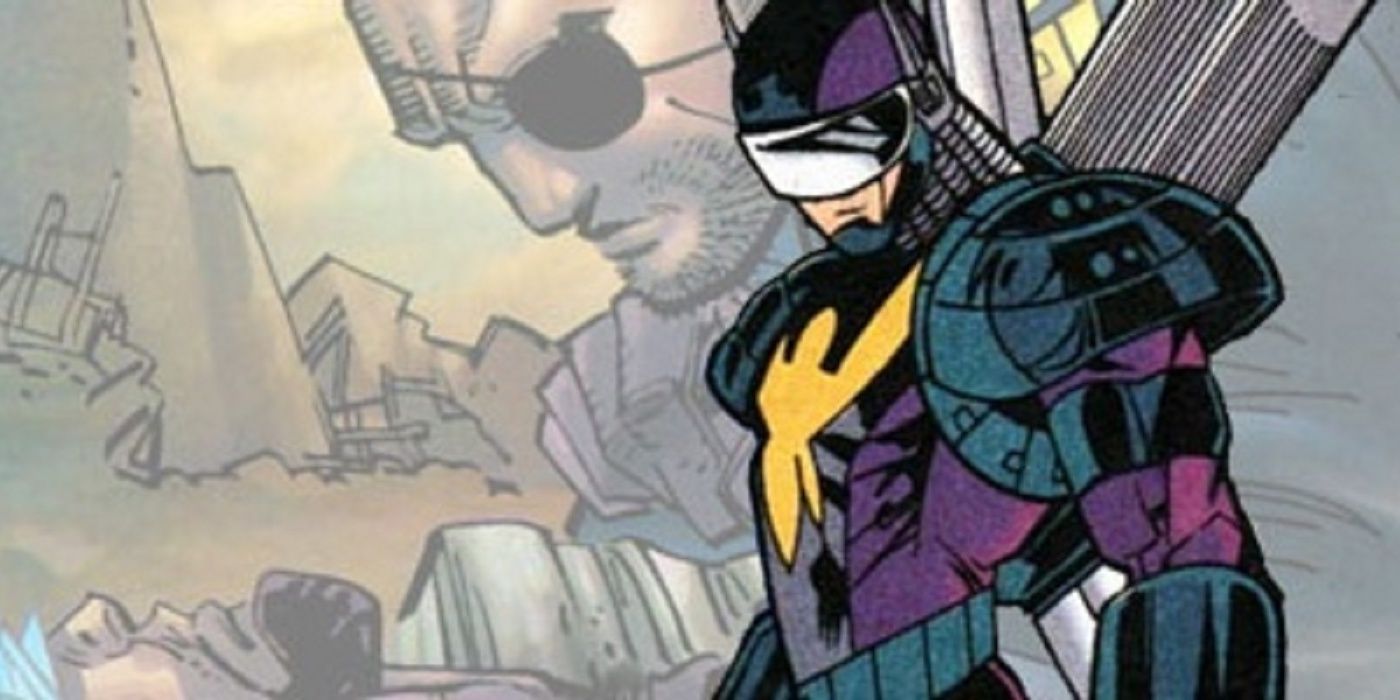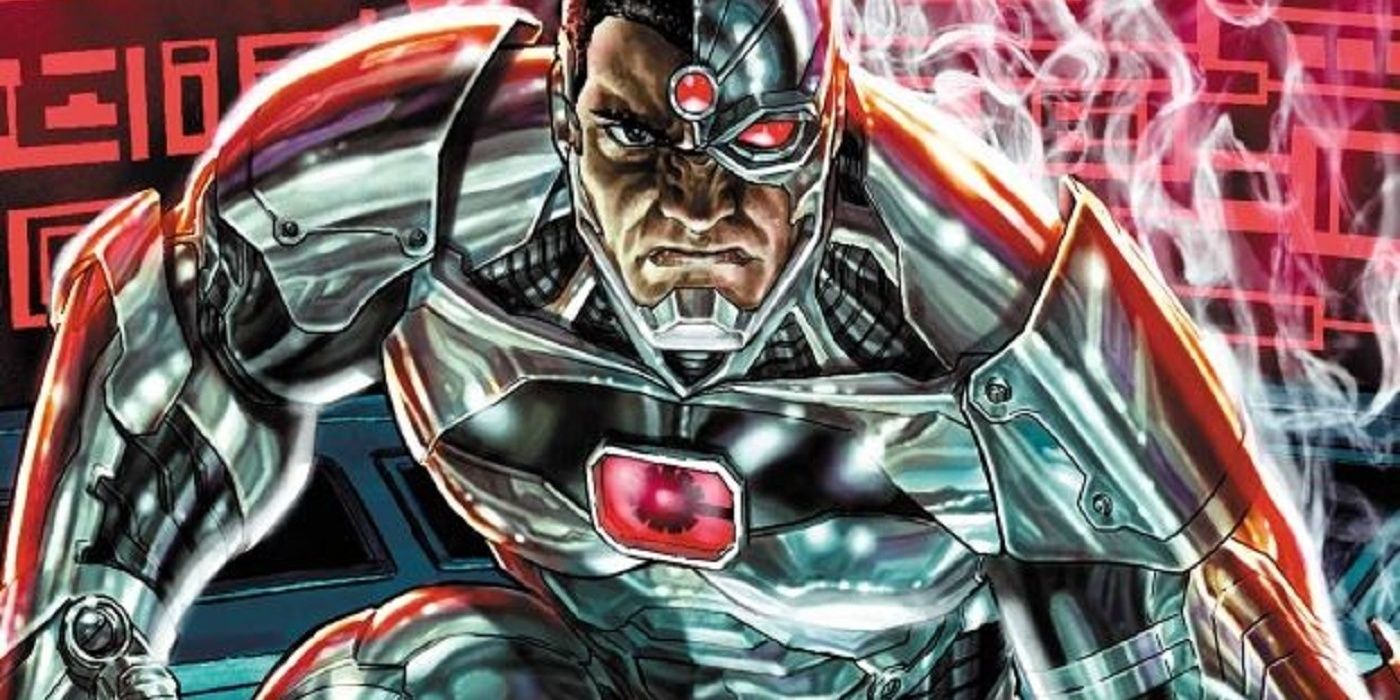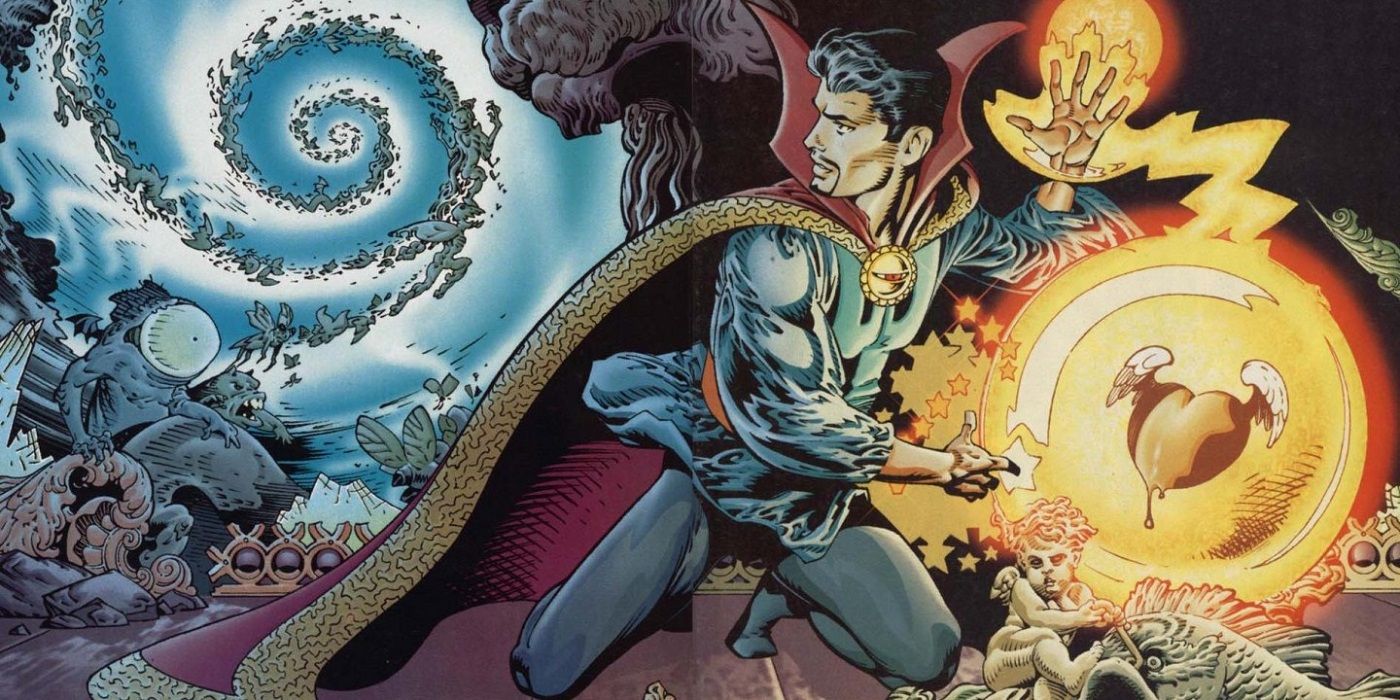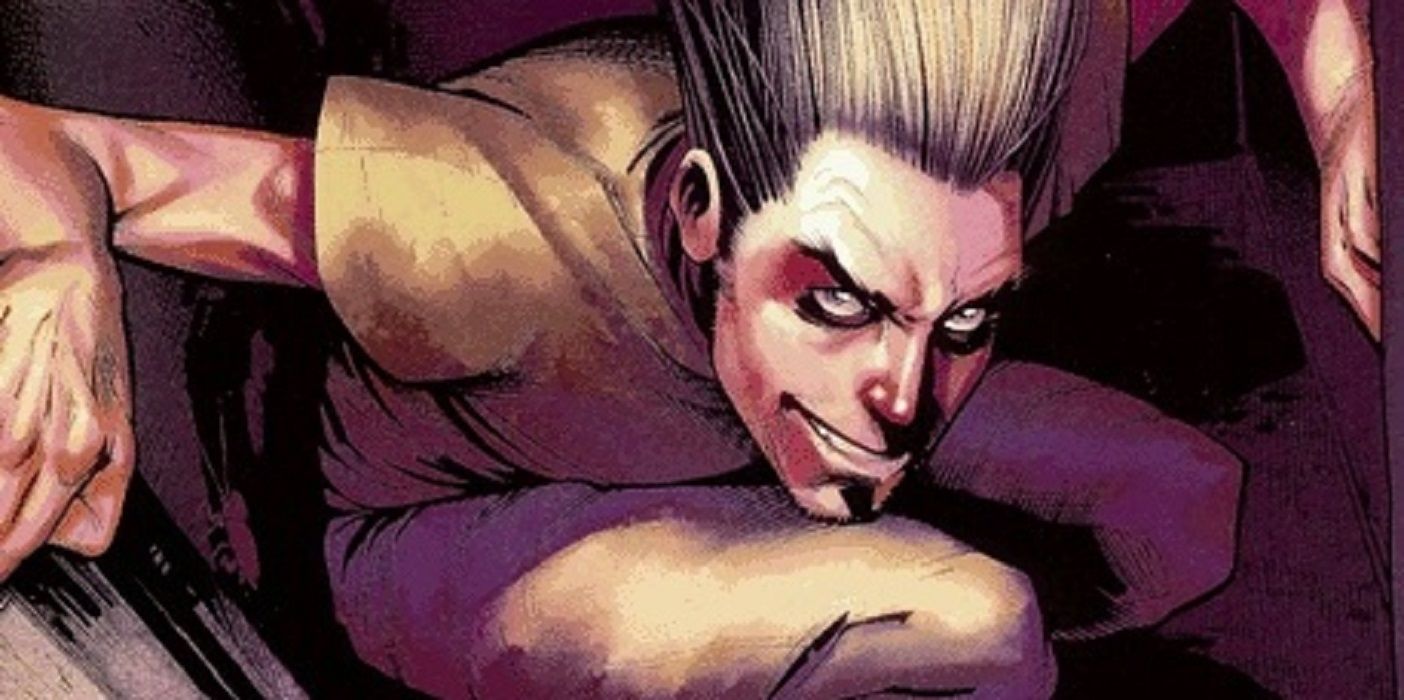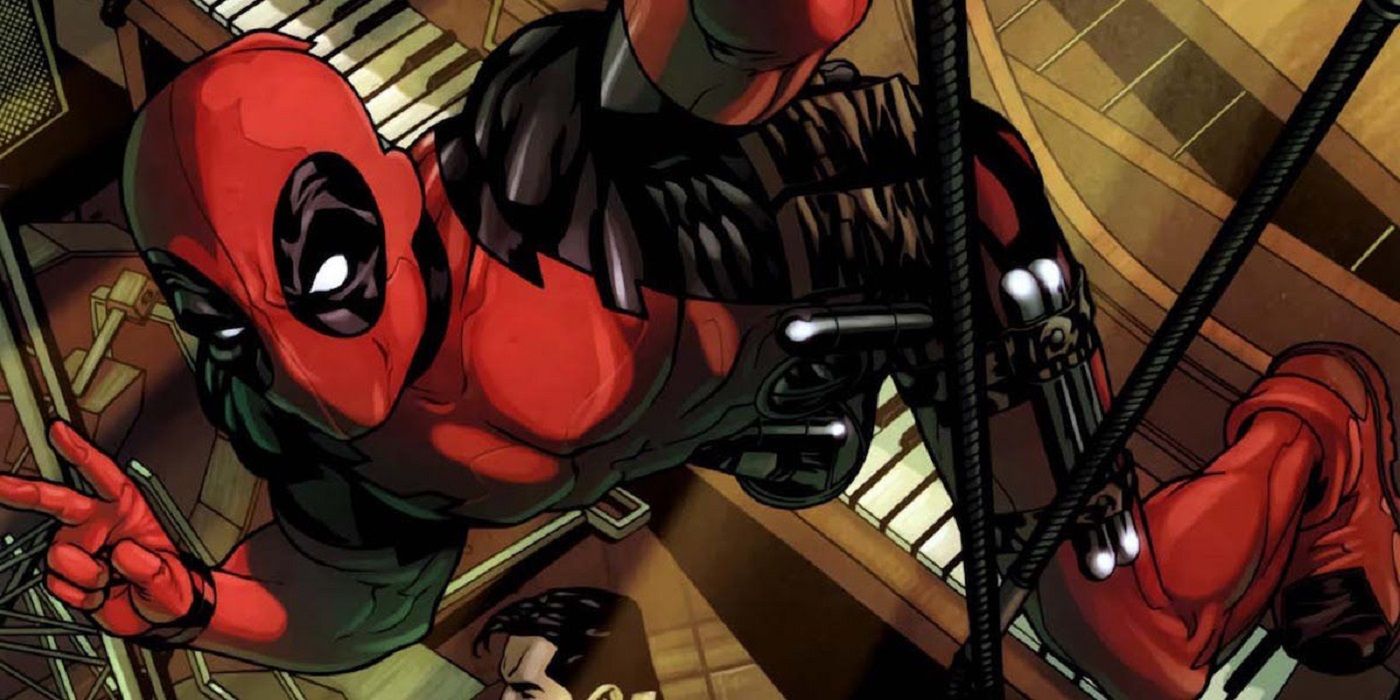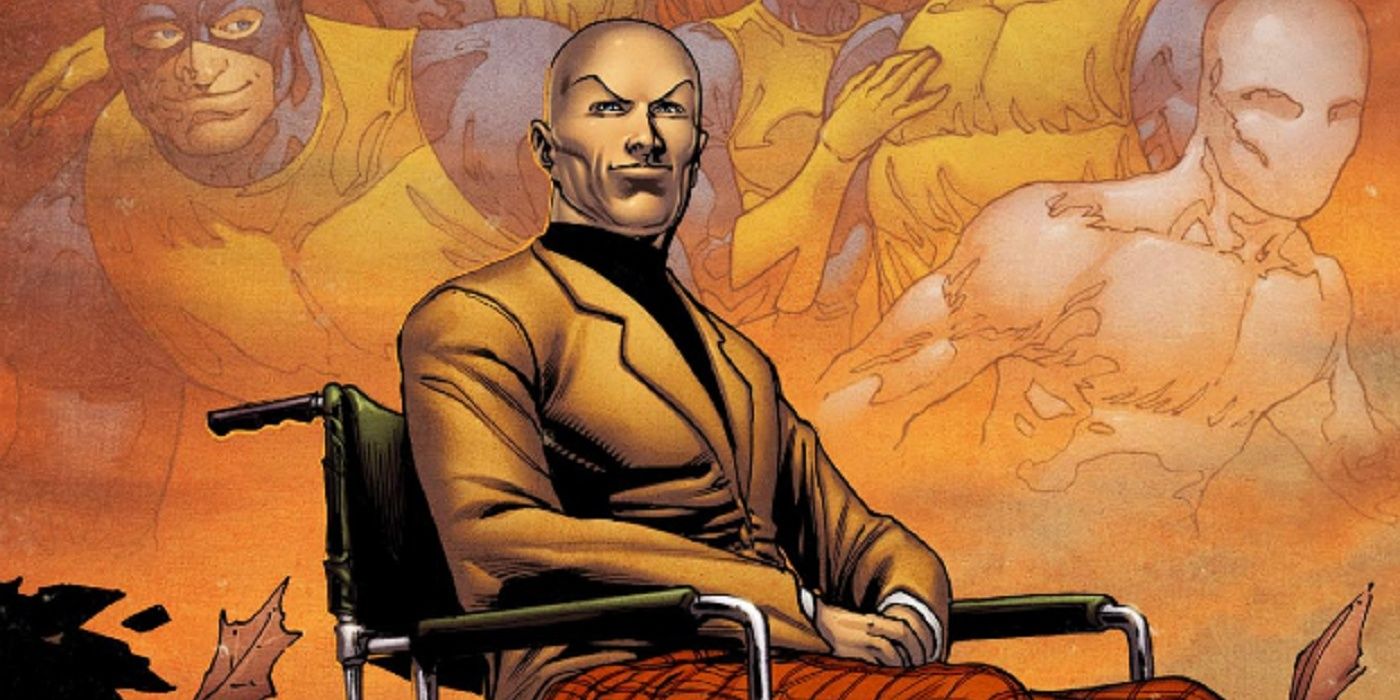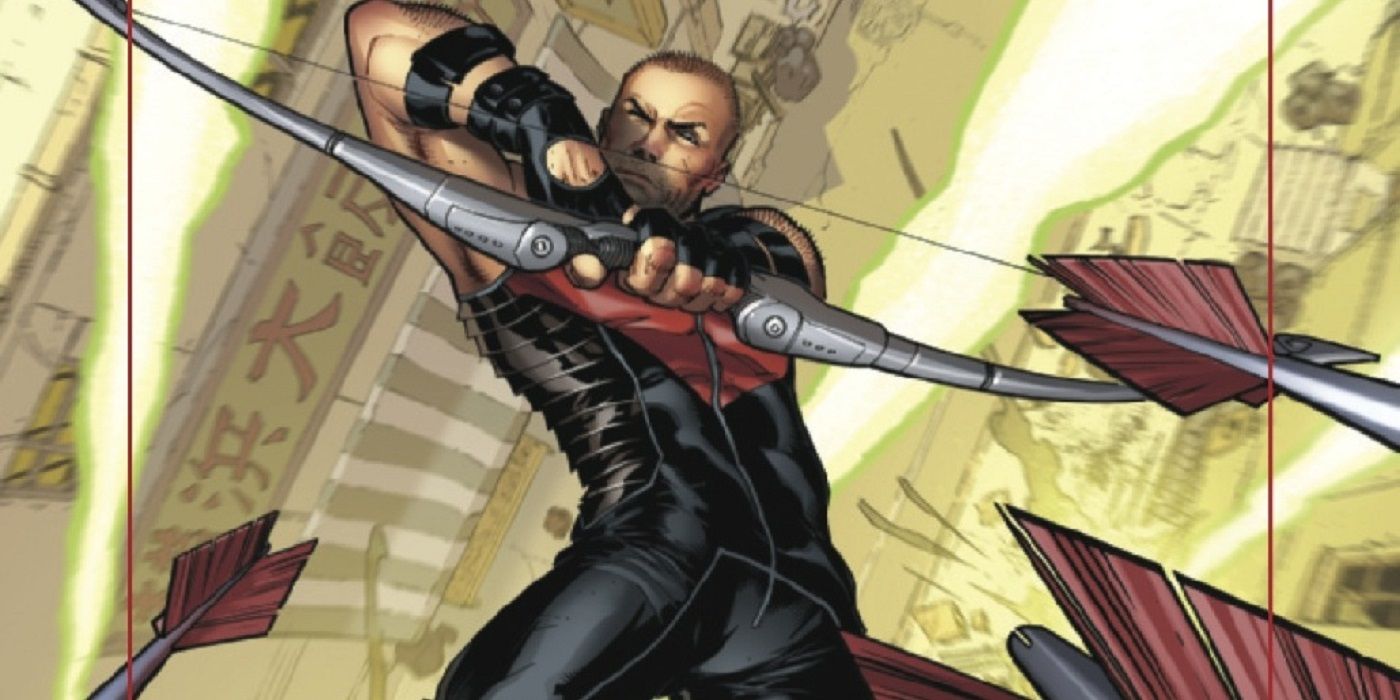When most people think of a superhero, they picture someone who’s super-strong, super-fast and/or can fly (or something along those lines, anyway). But why should being superhuman mean that you have to be able-bodied? There are plenty of occasions in the past where disabled characters have risen up from the pages of our comic books to save their world, showing us all in the process that anyone can be a hero, so long as they’ve got a really good cape!
RELATED: Rule 63: 15 of the Best (and Worst) Comic Book Genderbends
CBR thinks it’s important that all the comic book fans out there with physical, mental or learning disabilities have someone they can really look up to. That’s why we’ve come up with a list of 15 superheroes who don’t let their disability stand in the way of some good old-fashioned ass-kicking. Take a look and see if your favorite hero made the list!
15 Daredevil
Thanks in part to the success of Netflix’s “Daredevil” series -- and definitely not thanks to the woeful efforts of Ben Affleck in the 2003 film of the same name, directed by Mark Johnson -- Daredevil has become a household name in recent years. As such, he has given visually-impaired comic fans around the world a heroic figure that they -- and indeed, all of us -- can all happily aspire to become: a champion of the forgotten, the ignored and those deemed powerless.
As you may already know (and if not, where have you been hiding?!), Daredevil was blinded while still a young man, his eyes splashed with the same radioactive materials that gave him his fantastic extra-sensory abilities, which were immediately heightened to superhuman levels. Like many people who are visually-impaired, Matt uses sound as a method of orientation and navigation, reads printed words using his fingers and even sense disturbances in the air when someone is walking by or, in his crazy world, teleporting near him. On top of all that, he’s also a master of martial arts, trained by his similarly-blinded mentor, Stick, meaning he’s pretty darn dangerous with that baton of his.
14 Oracle
Barbara Gordon, the black-cowled Batgirl, suffered a life-changing injury in Alan Moore’s contentious classic, “The Killing Joke,” when she was shot in the spine by the Joker and became paralyzed from the waist down. The most upsetting thing about Barbara’s injury was that it was depicted as the Joker’s way of upsetting her father, Jim Gordon, which demoted Barbara to the role of property to be defaced.
However, despite this initially poor treatment, Barbara was given a new lease on life as Oracle, the DCU’s resident computer genius and director of the Birds of Prey (an all-female group of super-powered operatives that included Mockingbird and Black Canary). As a result of her resilience and undeniable awesomeness, Oracle quickly became a fan favorite and a strong female role model to women everywhere who are challenged by being differently abled.
When DC made the decision to bring back her old alter-ego Batgirl in in the New 52, many fans were outraged that Barbara had been transformed back into an able-bodied hero, especially given the fact that she was supposed to be training Wendy Harris (aka Proxy, another paraplegic character). What had been a hugely positive leap forward in the comic book world became a disappointing step backwards. Despite DC’s insistence that it’s increasing its representation of marginalized groups, a female character with her disabilities has not received significant coverage since.
13 Moon Knight
Marvel’s Moon Knight (aka Marc Spector) first appeared in the ‘70s as a mercenary and former CIA spook who dressed entirely in white and got his special powers from an Egyptian moon god called Khonshu (which, let’s face it, is pretty standard in the comic book world). However, in the 2011 reboot, writer Brian Michael Bendis and artist Alex Maleev made the character altogether more interesting and relatable by extending his battles beyond bad guys to include the difficulties of mental illness.
Although many people assume Moon Knight is schizophrenic, it would be more accurate to say that he suffers from dissociative identity disorder (commonly referred to as multiple personality disorder). In what CBR regards as a genius twist, Spector’s different personalities often manifest as other superheroes such as Spider-Man, Captain America and Wolverine: Moon Knight has visions of (and conversations with) these characters that lead to him figuring stuff out long before the “sane” characters know there’s anything wrong. As such, his disability is actually an asset that makes him a better superhero!
Unfortunately, Bendis and Maleev’s “Moon Knight” series was cancelled after just 12 issues. However, Moon Knight’s multiple identities have been retained in Warren Ellis and Declan Shalvey’s later resurrection of the character (this time as variations of the Moon Knight character, himself), although some fans may argue that this new version lacks the poetic realism of the old one, or that the changes made to the cause of Spector’s illness (now brain damage) are rather patronizing.
12 Komodo
Komodo, aka Melati Kusuma, is a double amputee in her human form, but thanks to some freaky science from Dr. Curt Connors (the Spider-Man villain who tried to regrow his arm using lizard DNA), she is able to transform into a creature that can not only walk, but can also regrow lost body parts. She also has hardened skin, super-quick reflexes and a spiky tail! Unlike the original Lizard, Komodo doesn’t become a mindless animal when she transforms and has a much greater level of control over when her transformations happen.
However, it’s fair to say that Marvel’s treatment of her character hasn’t really been all that inspiring for disabled fans: in “Avengers: The Initiative” #3, during a battle with Spider-Man that devolves into an insult-throwing contest, Spidey threatens Komodo with the removal of her powers and she breaks down sobbing, claiming that without her powers -- and thus her legs -- she is “nobody” (hardly a positive representation of disability!). Similarly, when she demonstrates the bravery to show her true form to Hardball in “Avengers: The Initiative” #8, breaking the Initiative’s secret identity rule in the process, he dismisses her as “just a girl” rather than as a kick-ass hero who’s strong enough to show her vulnerabilities to someone she cares about. While CBR may question the way in which she’s represented, at least Marvel didn’t try and straight-up “cure” her like so many others on the list!
11 Jericho
Like many of the heroes on this list, the story of how Joseph Wilson (aka Jericho) became disabled is not a happy one. As a young boy, Joseph was held hostage by a terrorist named Jackal to force his father -- Slade Wilson, better known as Deathstroke -- to divulge secret information. Deathstroke refused to play ball and as a result, Joseph’s throat was slit, rendering him mute. Let’s face it, that’s enough to give anyone daddy issues, even if the man in question isn’t a super-weaponized assassin!
Most of the initial coverage of his character was done with a surprising amount of insight and sensitivity. George Pérez insisted that Jericho’s emotions should be conveyed through visuals, rather than relying on the age-old thought bubble, to spell out to the reader what he’s thinking. He’s also been allowed to communicate with others using American Sign Language (or at least, that’s what we’re told in “Action Comics” #584). However, Jericho went through a rocky period of badly-portrayed insanity and has since been reimagined by DC as a fully able-bodied character for the New 52, which we think is a real shame, as positive representation in comic books for people struggling to live with mutism was already pretty hard to find.
10 Captain Marvel Jr.
Captain Marvel Jr. first appeared in “Whiz Comics” #25 back in the ‘40s, when his alter-ego, Freddy Freeman, became a civilian casualty of the battle between his hero, Captain Marvel, and the super-powered Aryan villain, Captain Nazi. After Freddy’s left leg is paralyzed and his grandfather is killed, Captain Marvel takes pity on him and shares some of his powers with the boy, allowing him to transform (much like his mentor) into a super-powered version of himself. All he has to do is say the magic words “Captain Marvel!” and that wheelchair and cane of his become redundant. He also materializes a rather badass cape (which incidentally, inspired Elvis to conjure a similar look onstage). This, arguably, isn't exactly the most positive message, as Freddy is always looking to escape rather than face his disability, but it’s still a pretty cool power to have!
Fans of the Captain Marvel comic series will probably notice that Captain Marvel Jr. is the only member of the Shazam/Marvel family of heroes that doesn’t use the word “Shazam!” to transform… well, there’s a reason for that. Fawcett Comics (which originally produced Captain Marvel) incorporated a genius marketing ploy into their new series, ensuring that every time someone read a comic relating to Captain Marvel Jr., they would be reminded to check out the latest issue on the original Captain Marvel. DC later rectified this discrepancy when taking over the franchise for the purposes of continuity and gave Freddy an altogether more traditional blue costume to wear.
9 Jubilee
Jubilation "Jubilee" Lee is an ex-mutant and vampire who’s best known for her association with the X-Men -- most notably as part of the X-Men animated series. However, she’s also worked alongside other super-powered teams including Generation X, X-Corps and the New Warriors. Although she has one of the most contentious costumes known to comics (let’s face it, the mustard yellow coat, hoop earrings and giant shades isn't a look for everyone), Jubilee deserves a place on this list for being one of very few comic book characters with a learning disability.
In “Wolverine” #62, Marvel revealed that Jubilee has dyscalculia, a condition that makes completing math-related tasks very difficult. This is particularly interesting given her new status as a vampire, as many folklore tales from around the world claim that vampires suffer from arithmomania (a compulsive desire to count) and that throwing a heap of rice at their feet is just as effective a deterrent as garlic or a pointy wooden stake (though perhaps less deadly, depending on your functional understanding of mathematics). Jubilee is supposedly vulnerable to all the other well-known vampiric weaknesses, so it’s possible she could suffer from this too, which would really suck for her! (Yes, that pun was totally intended. CBR regrets nothing.)
8 Puck
Eugene Milton Judd, better known as Puck, is a member of the Canadian superhero team Alpha Flight (a spin-off of Marvel’s Uncanny X-Men) who debuted in “Alpha Flight” #1 as a tough and loveable ex-mercenary with a short fuse. Although most people associate the name Puck with Shakespeare’s “A Midsummer Night’s Dream,” his character arguably shares more in common with a hockey puck than the mischievous sprite created by the Bard, being small, but tough! He quickly became a fan favorite as, despite the chronic pain caused by his dwarfism (a condition known as achondroplasty), he remained positive and was able to use his diminished size and agility to his advantage, utilizing his body as a weapon and cartwheeling through opponents… usually with a few cheeky one-liners thrown in.
However, Puck's creator John Byrne’s original conception of Puck as a happy dwarf who could kick ass without superpowers was retconned by writer Bill Mantlo for Vol. 3 of the comic. In it, Puck was reimagined as a spirit-trapping ancient blade thief whose short stature was a result of magic rather than disability. The decision was, understandably, highly controversial, as many fans felt the change was insulting. Sadly, after his character attributes were adjusted, Puck had a much less positive outlook on life (let’s be honest, he became whiny to the point of being intolerable), and has, apart from his supporting role in the recent "Captain Marvel" series, since faded into semi-obscurity.
7 Hornet
There have been three characters in the Marvel universe that have used the name Hornet over the years, two of whom (Scotty McDowell and Eddie McDonough) have identified as disabled. This entry concentrates on the latter, mainly because he’s one of the only superheroes CBR knows of with cerebral palsy, making him a positive role model to fans worldwide who struggle with CP every day. He's also got the coolest suit, thanks to being a skilled inventor.
Unlike most of the heroes on this list, Eddie has been living with his condition from birth, but thanks to the super-powered suit he was bequeathed (and would later modify himself), hardly anyone notices that he has an atrophied right arm. He proves himself to be just as tough as his teammates, the Slingers, but most importantly of all, he’s a thoroughly nice and decent human being, making him an excellent role model. After his mentor and hero, Black Marvel, sold his soul to the devil in return for youth and power, he convinced his betrayed fellow teammates to help save their leader from an eternity in hell. This ultimately led to the loss of Marvel's life as well as Eddie's armor, forcing him into retirement. He would later die a hero, sacrificing himself by standing alone against the forces of Hydra and a mind-controlled Wolverine.
6 Cyborg
If you think your parents are a bit of a nightmare sometimes, spare a thought for Victor Stone. Not only did his parents perform a load of ethically-questionable experiments on him as a kid in the hopes of making him smarter, they also created an inter-dimensional portal in their lab that let a massive gelatinous monster through. The result was Victor getting horribly mutilated. His parents then turned their own son into a mechanical Humpty-Dumpty, replacing his lost body parts with experimental prosthetics that wouldn’t look out of place in a “Terminator” movie.
Despite the tragedy of his circumstances and a few early thoughts of suicide, Victor soon figures out how to live with his disability, becomes a key player in the Teen Titans (and later, the Justice League), and manages to make a few firm friends who treat him with the love and respect he deserves in the process. The fact that many of his teammates look up to Cyborg as something akin to an idol is why CBR has placed him so highly on the list; it’s truly heart-warming to see him being a role model within the DC universe, as well as outside of it.
5 Doctor Strange
Doctor Steven Strange was regarded as one of the most competent neurosurgeons in the world before a car accident caused extensive nerve damage to his hands, making it impossible for him to continue. However, his search for a cure led to Strange finding a whole new use for those magic hands of his: wielding... well... actual magic. After journeying to the Himalayas to become a student of the Ancient One and learning to live with his disability, he rises to great heights as the Sorcerer Supreme, swapping his egotism for heroism and his white coat for a kick-ass cape (and a silly name).
It’s worth pointing out that, before he became disabled, Stephen Strange was a real jerk -- take a look at his back story in “Strange Tales” #115 if you don’t believe us! However, in learning to overcome the tragedy of his injuries, he also learns how to be truly selfless and care about his fellow man. That’s an extremely positive message for anybody whose life may have been turned upside-down by an unexpected and seemingly negative change to their circumstances. The Doctor Strange film adaptation is currently in theaters.
4 Legion
It can’t be easy being the son of Charles Xavier, everyone’s favorite nutty professor, but David Haller -- otherwise known as Legion -- knows just what’s that’s like. Unfortunately, he's got plenty more to worry about than who his daddy is. Haller might be one of the most powerful telepathic mutants alive (his range of abilities is staggering), but it’s fair to say that, due to his mental instability, those powers have far more control over him than he does over them. That's not a great place to be in when you could probably destroy the entire world with a thought (which, technically, he has done before, sparking the "Age of Apocalypse.")
Legion rates so highly on this list because the handling of his character in “X-Men: Legacy” by writer Simon Spurrier was superb: he’s not portrayed as a raving lunatic foaming at the mouth like most mentally ill characters unfortunately are (we're looking at you, Arkham Asylum!), but rather as a justifiably insecure anti-hero who’s trying to find himself and figure out how to control his powers. It just so happens that he sometimes does his soul-searching in a padded room.
This approach to the depiction of mental illness makes his character altogether more relatable and, frankly, it makes the comics a joy to read. It’s little wonder that FX is set to give Legion his own TV show in 2017, and if Netflix’s successes with “Jessica Jones,” “Daredevil” and “Luke Cage” are anything to go by, it’s sure to be a winner.
3 Deadpool
Deadpool is arguably one of the most subversive characters ever to appear in a comic book; in addition his omnisexuality and his difficult upbringing, the Merc with the Mouth also acts as a representative for the disabled due to his physical deformities and his experiences with chronic pain. He’s literally an anti-hero role model for just about every marginalized group you can think of, which we think is pretty awesome, especially how popular the character has become.
As most people already know by now, Deadpool was terminally ill with cancer when he "acquired" his abilities: the whole reason he agreed to become a test subject in the Weapon X Program (the same mad-science initiative that gave Wolverine his adamantium skeleton) was to try and find a cure for his illness. Although Deadpool can heal from pretty much anything after his transformation, he still has cancer and is in constant pain, meaning there’s a war raging inside him, even when there are no bad guys cutting him into pieces. He takes it all on the chin though, with a surprising amount of humor, and that’s one of the many reasons we all love him!
2 Professor X
Professor X, otherwise known as Charles Xavier, is a first-class telepath and one of Marvel’s most powerful mutants. He’s also a globally-respected scientific expert in the field of genetics and plays an ambassadorial role in promoting peaceful relations between humans and their super-powered counterparts. He's also probably the first disabled superhero most people think of, hence his high standing here.
Although he’s commonly depicted as a paraplegic with one of the coolest wheelchairs in comics (Doom Patrol’s Chief does give him a run for his money in that respect), it’s worth noting that there have been several instances where Xavier has regained the use of his legs, such as when his body “remade” itself after M-Day in “X-Men: Deadly Genesis” #5. The cause of his paraplegia has also varied between his comic and cinematic storylines. In the film “X-Men: First Class,” for example, Xavier is paralyzed by a misdirected bullet which hits his spine, whereas in the comics, he is crippled by an alien scout named Lucifer, who crushes his legs with a rock.
Attempts at “curing” the Professor X seem rather redundant and kind-of insulting, especially as his powers don’t require anything from him physically: he’s arguably got the coolest range of mental powers of any superhero, including the ability to transfer his powers to another host, mask his presence through telepathic manipulation, communicate with the entire world using Cerebro and inflict terrible pain on his enemies just by thinking about it.
1 Hawkeye
It's up for debate how Hawkeye (aka Clint Barton) lost his hearing; whether it was when he used a sonic arrow to counteract Crossfire’s brainwashing weapon, or in Matt Fraction and David Aja’s run, when he had his eardrums destroyed by a psychopathic clown. Either way, what’s great about Hawkeye isn’t just that fans who struggle with partial/full deafness have a hero to look up to, but also the carefully thought-out and insightful way that Hawkeye’s condition is depicted on the page.
Gone are the old days when a few half-hearted jokes about Clint being hard of hearing would make the grade. Instead, readers are treated in “Hawkeye” #19 to an immersive experience in which the practicalities of living without sound are made a tangible reality. Speech bubbles are blank and sound effects are conspicuously absent. Text is distorted when Clint is lip-reading to show exactly what it’s like to try and decipher speech. Best of all, though, there are entire sections in which Clint and his brother speak in sign language!
In addition to all this, Fraction and Aja get extra kudos for allowing Hawkeye to rescue the one-eyed canine, Pizza Dog (aka Lucky), and then giving him his very own issue in “Hawkeye” #11. The techniques used in both cases ares experimental, insightful and put disability (both human and canine) in the middle of the action… and our hearts.
Are there any other disabled superheroes that you think deserve a place on our list? Let us know in the comments!

